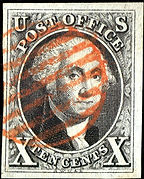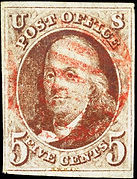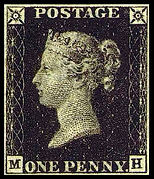
CYPHER STAMP CLUB
Colorado Young Philatelic Explorers and Researchers
Sponsored by the Rocky Mountain Philatelic Library
2038 S. Pontiac Way, Denver, CO 80224




BOOKLET STAMPS
A postage stamp booklet is made up of one or more small panes of stamps with a cover to protect the stamps. The first booklet stamps appeared in Luxembourg in 1895, this was not successful and it was more than 40 years before the country issued another stamp in booklet form. The United States issued its first booklet stamp in 1900, a pane of six 2 cent stamps. The Post Office charged a 1 cent fee for purchase of the stamp booklets. This fee helped pay for the cost of printing the front and back cover of the booklet. In the early 1960s the Post Office stopped charging this fee, it resulted in an increase in the number of people who started collecting stamps in booklet form. Usually a booklet stamp has one, two or even three straight edges. Stamps with one straight edge come from the middle of the booklet, those with two straight edges are from the corners. In rare instances you will come across a booklet stamp with three straight edges, this stamp is from the end of a large stamp pane. We make mention of the "tricky" coil stamps in the coil section. These are booklet stamps that can be easily mistaken as examples of coil stamps.

1922 Canada
Booklet pane of six 1 cent stamps. Note the straight edges on the top and bottom stamps as well as the two straight edges on the stamps found in the right hand corners.

2022 United States
Booklet pane of twenty forever stamps. Note the single straight edge on the top and bottom rows of stamps.
1954 Japan
Booklet pane of ten 10 sen stamps. Note the single straight edge on the top and bottom rows of stamps.


1985 United States
Booklet pane of three $10.75 cent express mail stamps. This is an example of a "tricky" stamp. Note how each stamp has a straight edge on the top and bottom, just like a coil stamp. The stamp on the far right has three straight edges.

1910 United States
Booklet pane of six 2 cent stamps. Note the single straight edge on the stamps to the left and right, as well as the two straight edges on the bottom row of stamps.

1923 United States
Booklet pane of three 10 cent airmail stamps. This is an example of a "tricky" stamp. Note how each stamp has a straight edge on the left and right, just like a coil stamp. The bottom stamp has three straight edges.

